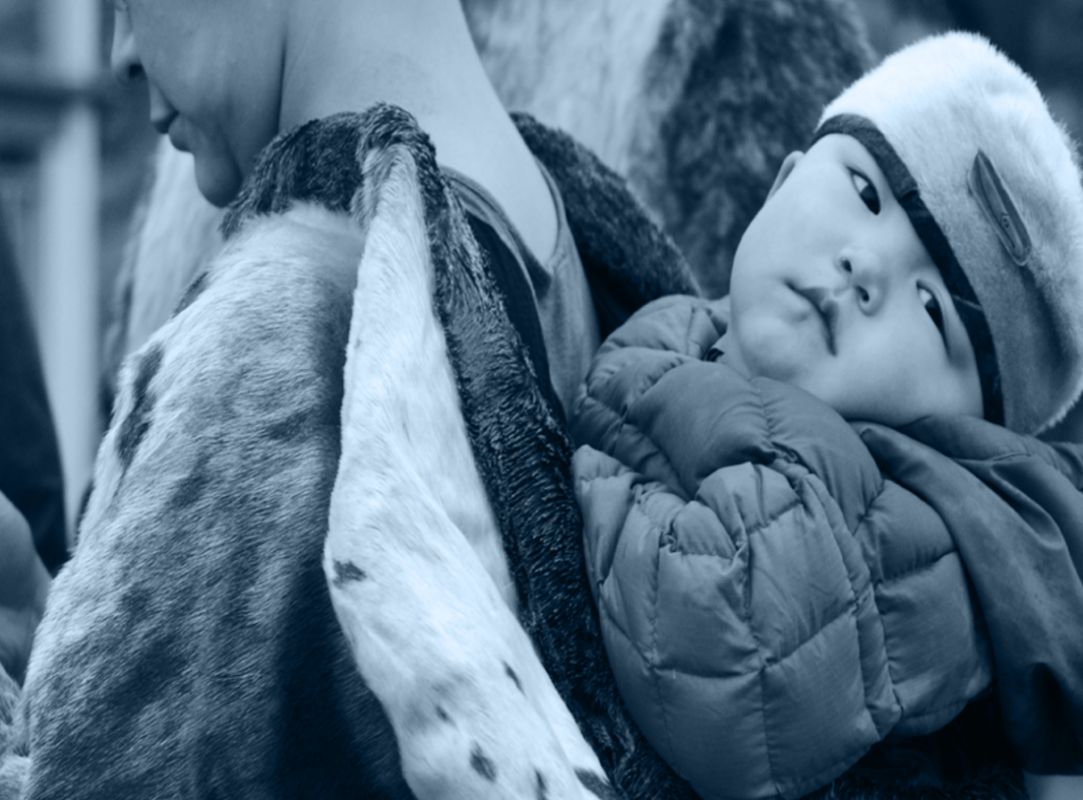News
The “Amauti”: much more than just a seal parka
The Inuit Amauti – The Sealskin Parka – Then and Now
The Amauti is so much more than just a parka. Made from seal skin or caribou, the parka was made to protect the Inuit from the northern elements. They were worn traditionally by women to carry their babies but fathers or male caregivers could wear them as well. The basic design was a pullover parka with a hood that could be tightened to offer good peripheral vision. The hood had a sunburst design and was trimmed with animal fur likely wolverine or wolf. Wolverine fur is a natural moisture repellent which helped protect from the elements. The amauti was also roomy so that they were easy to work in. Under the outer amauti, a second jacket would be worn with the fur facing inward for further insulation.
It’s also a baby carrier!
The Inuit woman’s amauti had two tongues or flaps in the front and back and a sculptured hemline. The long flaps would keep the women’s legs and back warm especially needed when travelling by dogsled. Young girls were dressed in amautis early in life but when they entered puberty their amauti changed, the length of these flaps changed as well as the silhouette of the garment. The amauti was also used to carry children, a belt would be used to tie off a sewn on pouch positioned below the large hood. There are some variations to the style of the amauti; sometimes the baby pouch extends from the hood and it appears the baby is being carried in the hood while others the pouch is distinct from the hood. Interestingly, a piece of polar bear fur or caribou skin was put in the base of the pouch to catch any soiling by the baby, when it became dirty it was changed. Carrying the baby this way would keep the baby warm benefiting from the mother’s body heat. The baby would be naked against the mother’s bare back so that from birth to toddler, mother and baby would have the long term benefits of skin to skin contact and a close and tender bond. When mothers wanted to nurse their baby , they would pull their arms in, rotate the amauti so that the baby and pouch was in the front making it easy to access the mother’s breast. In earlier times, the baby would be naked in the amauti until they got to the age where they were spending time out of the amauti. It is amazing to see how these amautis were designed so that the baby is safe and the mother is comfortable to do her daily work. They are still being used today, as a matter of fact, many companies have made baby carrying coats but none act as a carrier itself like the amauti is, it’s an amazing design.
Amauti Design reveals your roots
Several decades ago, the design on the Amauti signified which Inuit community you came from. It could be something as simple as how many stripes were around the bottom or the cuffs of the parka or the shape of the hood or flaps in the front and back. In earlier times, the amauti would be decorated with shells and beads and it is said that these decorations would attract spirits to protect the ovaries.
Inuit Fashion Designers inspired by Amauti Design
Today, Inuit seamstresses are carrying on the traditions of their ancestors. Many are creating amautis that continue to be hugely popular as a baby carrying garment. Other designers are using the traditional amauti as an inspiration to create contemporary fashion parkas that are being distributed far and wide.
Sources:
- https://www.instagram.com/p/BhK6d25BJtsnjiKNIRx8bt-8ps6VpLPvEix3sg0/
- https://www.uphere.ca/articles/anatomy-amauti
- https://thebabyhistorian.com/2018/11/14/the-inuit-amauti/
- https://www.facebook.com/watch/?v=189771815672513
- https://maryloudriedger2.wordpress.com/2019/05/21/whats-an-amauti/


 Français
Français 简体中文
简体中文 ᐃᓄᒃᑎᑐᑦ
ᐃᓄᒃᑎᑐᑦ